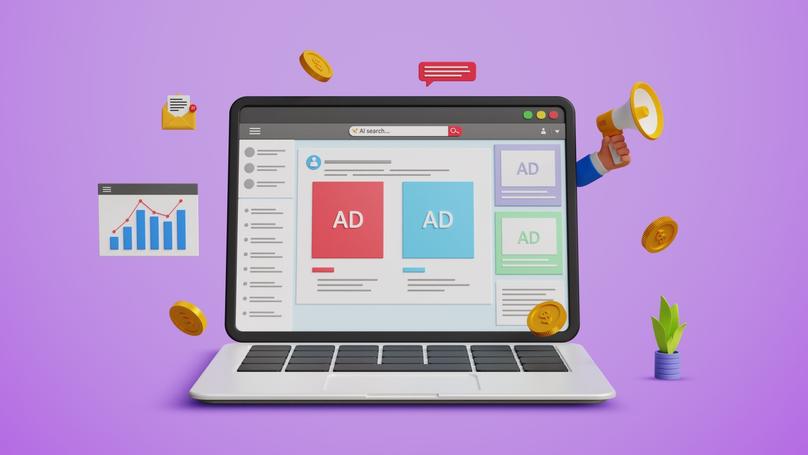The Seven Touch Theory

What is the Seven Touch Theory?
The seven touch theory is well-known in marketing and sales. It implies that customers typically engage with a product seven times before deciding to purchase it. This theory highlights the necessity for customers to engage with your brand and offerings about seven times to elicit a desired response.
This marketing strategy originated in the mid-20th century and became widely accepted after psychologists confirmed marketers' insights. Research revealed that repeated brand interactions across different touchpoints not only improve recognition but also cultivate loyalty among potential customers. These touchpoints are vital for promoting products and services, including targeted ads, contextual advertising, email campaigns, phone calls, offline events, and more. Ultimately, this ongoing engagement fosters consumer confidence and leads to higher conversion rates.
How and why does it work?
The seven touch rule can be illustrated with a straightforward example. Picture this: during their morning commute, someone notices a pizza delivery advertisement on a roadside advertisement but barely acknowledges it. Later, they encounter the same delivery company in a social media post, which piques their interest. This leads them to visit YouTube to watch reviews of the service. After a long workday, they decide to order a pizza from that company. These multiple interactions allow the brand to subtly reinforce its presence, helping to shape a favourable view and ultimately leading to them buying a pizza.
It's essential to recognise that the seven touch technique doesn't focus on selling products. This approach is effective when a potential customer already wants your product. Gentle brand reminders and subtle advertising can help them make a favourable decision. Certainly, there doesn't need to be precisely seven "touches"; even four or five can be enough. These might include a YouTube video, Instagram stories, newsletters with details about discounts and promotions via text messages, a valuable social media post, or other lead magnets such as a checklist or a coupon.
Similarly, if the product is costly and involves a more significant decision than simply ordering a pizza, such as purchasing household appliances or gadgets, greater touches will be necessary. This requirement arises because individuals are more inclined to buy when they are familiar with a company, often growing through social media posts, newsletters, and other channels that help build a level of trust. Regardless, a person undergoes several stages when deciding to purchase a product. Generally, this is evident in the CJM (we discussed what a Customer Journey Map is here).
To help a customer move from recognising their need to meeting it with your product, it's crucial to emphasise the benefits regularly, share more product details, and ideally utilise multiple channels. This strategy fosters their confidence in their choice.
It's critical to identify and utilise the channels that potential customers interact with daily. In the morning, they typically check weather reports, visit news websites, chat on messaging apps, and scroll through social media while commuting. Throughout the day, many rely on search engines, mobile applications, classified ads, and their personal or work emails. In the evening, their attention shifts back to social media, niche websites, streaming services, and more.
7 touches in marketing

In marketing, touchpoints enable you to engage with prospective customers, highlighting the relevance of choosing the right communication channel tailored to your target audience, the products you provide, and your aims. For example, marketing recognises these essential customer touchpoints:
1. Traditional advertising channels
These channels are categorised into online and offline options. Online channels include videos, reels, and posts on social media. In contrast, offline channels encompass advertisements on television or radio, printed materials, and various outdoor displays such as signs, banners, flyers, and booklets. Even if a prospective buyer isn't currently interested in your offer, seeing your store's name may assist them in recalling you when a need arises later. Likewise, offline advertising includes hosting conferences, webinars, exhibitions, master classes, workshops, and tastings, where direct interaction with customers takes place.
2. Content channels
Let's remember that content marketing involves diverse strategies aimed at creating and sharing valuable information to engage potential customers through various formats. The primary goal is to attract audience interest, foster trust, and enhance brand credibility. As a crucial part of the seven touch theory, content marketing features different aspects like company blogs, references to the media brand, and video reviews on platforms such as YouTube, among others.
3. SMM channels
This includes posts and brief humorous videos on social media, engagement with bloggers, also known as opinion leaders, such as influencer marketing, along with targeted advertising.
4. Email and SMS mailings
The communication might include details on upcoming promotions, sales, new products, promo codes, special offers, and other future events.
5. Search engine optimisation
Certainly, it is more logical to use the so-called "white hat SEO". This involves a comprehensive and multifaceted approach to promotion that complies with search engine rules. Certainly, this form of promotion incurs higher costs and yields results over a longer period. Still, it avoids the risk of sanctions that may arise from illegitimate promotional tactics (such as utilising a doorway in black hat SEO).
To ensure this touch is effective, you need to establish a natural search, which pertains to the websites and specific articles that emerge when users search, without relying on paid ads. The aim here is to draw traffic to enhance the conversion rate naturally. Likewise, a particularly effective form of search engine optimisation is local SEO, which promotes websites in search results for region-specific queries.
6. Touches in mobile applications
This involves engaging consumers through messengers, advertising communications, newsletters, and notifications within brand applications.
7. Social proof or recommendations
This can include reviews on dedicated platforms and social media, reviews from satisfied customers eager to share their experiences, recommendations from friends and acquaintances, and success stories published by the company, among others.
Thus, at the heart of it, the Seven Touch Theory in marketing is primarily about attracting attention, engaging and fuelling the interest of the audience through various channels of communication, i.e. creating demand for the product.
7 touches in sales

Sales touches closely resemble marketing interaction channels but vary in important aspects. The categories of sales touches include:
- Cold calling. This occurs when a company representative contacts potential customers to comprehend their needs, capture their interest in the product, or provide services.
- Newsletters. This can include sending letters through email or text messages containing special offers and promotions.
- Personal product presentations. These involve emphasising a product's benefits, demonstrating its functionality, and addressing customer concerns.
- Social media. Commenting on posts from the brand's official accounts is a great way to maintain a connection with customers.
- Test versions of the product or a complimentary trial period. You can allow potential customers to try a specific product for free for a month to evaluate its quality; online cinemas, language learning apps, and other services frequently do this.
- Helpful materials. For instance, instructions for utilising the proposed product, printed or digital catalogues, brochures, and similar materials.
- Affiliate and referral programs. The brand provides rewards for recommendations, and cross-selling can function as an additional touchpoint.
In sales, unlike marketing, touches refer to direct interactions with customers, such as calls, meetings, or emails, primarily aimed at closing a deal. Sales touches are generally more personalised and assertive than marketing strategies. Additionally, they often occur in a coordinated manner, merging various methods, such as three cold calls, three emails, and a face-to-face meeting.
Touchpoint categories
In addition to differentiating marketing and sales touches, these can also be categorised in various other ways. For example, one approach classifies touchpoints based on the particular senses they stimulate in clients.
1. Visual
The store's interior and lighting, department layout, staff behaviour and appearance, website design and speed, user interface ease, corporate colours and logo consistency, and ordering process all play significant roles.
2. Auditory
This feature is particularly crucial for cold calls, as factors such as tone, intonation, respect for conversational boundaries, and customer engagement are essential. In physical stores, it's also important to emphasise the professionalism and courtesy of sales staff, as well as the selection of background music, which should be maintained at a moderate volume to prevent being intrusive.
3. Olfactory
Maintaining a pleasant yet understated aroma in the store is crucial. Consultants should avoid wearing strong fragrances, as intense scents might deter potential customers.
4. Informational
Comprehensive information about the brand-its history, mission, objectives, founders, and notable figures-must be readily available and clearly presented for prospective customers.
To put it differently, establishing all the essential conditions is crucial to ensuring that customers don't leave empty-handed and end up buying something. Therefore, attention should also be given to smaller details such as the store's music, accessibility to company information, and ease of buying a product.
The key guidelines of the seven touch technique

The seven-touch technique for "warming up" clients is an effective approach, as long as it's applied carefully to prevent annoying prospective customers. Here are essential guidelines to consider:
1. Multichanneling
To ensure visibility without overwhelming customers, connect with potential consumers through various channels-email newsletters, social media posts, and targeted ads. The more frequently they encounter your product across different locations and platforms, the more their trust and familiarity will grow.
2. Systematicity
Customer interactions should be frequent yet balanced. Initially, contacts can be subtle, such as sharing a helpful post on social media or a brief, humorous video. However, the approach should shift to more sales-focused content, like special deals or benefit demonstrations, as the number of interactions reaches 5 to 7 touches. To maintain a consistent strategy, these interactions must be organised as distinct tasks within a CRM system, linked to key performance indicators, assigned deadlines, and designated responsibilities for employees.
3. Personalisation
Advertising messages are incredibly effective when customised for a particular audience. The more relevant each interaction, like a reminder for an abandoned shopping basket or a promotion related to previous browsing activity, the quicker the strategy will yield results. Before implementing the seven touch rule, marketers must examine which touchpoints will be more suitable and impactful for each audience segment.
4. Timing
Refrain from overwhelming customers with too many interactions over a short period. Instead, space out touchpoints over several weeks and adjust the timing determined by the purchase's importance. For impulsive buying, multiple engagements over 5-6 days can be effective, while high-value items may require outreach over several months.
5. Proposing taking action
Every customer interaction should conclude with a clear invitation for further engagement. For example, a social media post might contain a link for chatting with a manager, an email newsletter might include a downloadable guide with a detailed download link, and a YouTube video may prompt viewers to fill out a checklist and share their results in the comments section.
6. Monitoring results and modifications
Monitoring the effectiveness of various touchpoints is crucial for maximising customer engagement. In certain situations, email newsletters might be more effective, while contextual advertising may yield better conversions in other cases. After identifying the most effective and influential communication channel for your prospective customers, prioritise improving its effectiveness.
Conclusion
The Seven Touch rule is the most important principle that will deliver an effective advertising campaign, create a positive image of the brand in the eyes of the mass audience, and boost its visibility. The more touchpoints you use that are relevant to consumers, the better results you will get.
Effective communication channels are crucial to ensuring that the first interaction with customers leads to others. Engagement must be structured, continuous, and multi-faceted. Every touchpoint not only reminds customers of your presence but also showcases your credibility, dedication to addressing their needs, and commitment to building trust. Strong relationships require time; therefore, consistency is vital. Repeatedly offering special promotions, addressing feedback, keeping lines of communication open, and sharing valuable content can transform potential customers into loyal brand advocates.























